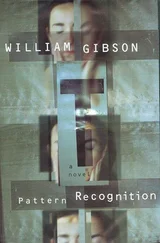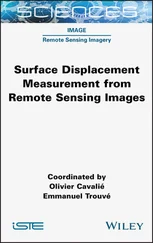231 227
232 228
233 229
234 230
235 231
236 232
237 233
238 234
239 235
240 236
241 237
242 238
243 239
244 240
245 241
246 242
247 243
248 244
249 245
250 246
251 247
252 248
253 249
254 250
255 251
256 252
257 253
258 254
259 255
260 256
261 257
262 258
263 259
264 261
265 262
266 263
267 264
268 265
269 266
270 267
271 268
272 269
273 270
274 271
275 272
276 273
277 274
278 275
279 276
280 277
281 278
282 279
283 280
284 281
285 282
286 283
287 284
288 285
289 286
290 287
291 288
292 289
293 290
294 291
295 292
296 293
297 294
298 295
299 296
300 297
301 298
302 299
303 300
304 301
305 302
306 303
307 304
308 305
309 306
310 307
311 308
312 309
313 310
314 311
315 312
316 313
317 314
318 315
319 316
320 317
321 318
322 319
323 320
324 321
325 322
326 323
327 324
328 325
329 327
330 328
331 329
332 330
333 331
334 332
335 333
336 334
337 335
338 336
339 337
340 338
341 339
342 340
343 341
344 342
345 343
346 344
347 345
348 346
349 347
350 348
351 349
352 350
353 351
354 352
355 353
356 354
357 355
358 356
359 357
360 358
361 359
362 360
363 361
364 362
365 363
366 364
367 365
368 366
369 367
370 369
371 370
372 371
373 372
374 373
375 374
376 375
377 376
378 377
379 378
380 379
381 380
382 381
383 382
384 383
385 384
386 385
387 386
388 387
389 388
390 389
391 390
392 391
393 392
394 393
395 394
396 395
397 396
398 397
399 398
400 399
401 400
402 401
403 402
404 403
405 404
406 405
407 406
408 407
409 408
410 409
411 410
412 411
413 412
414 413
415 414
416 415
417 416
418 417
419 418
420 419
421 420
422 421
423 422
424 423
425 424
426 425
427 426
428 427
429 428
430 429
431 430
432 431
433 432
434 433
435 434
436 435
437 436
438 437
439 438
440 439
441 440
442 441
443 442
444 443
445 444
446 445
447 446
448 447
449 448
450 449
Scrivener Publishing
100 Cummings Center, Suite 541J
Beverly, MA 01915-6106
Publishers at Scrivener
Martin Scrivener ( martin@scrivenerpublishing.com)
Phillip Carmical ( pcarmical@scrivenerpublishing.com)
Recognition and Perception of Images
Fundamentals and Applications
Edited by
Iftikhar B. Abbasov

This edition first published 2021 by John Wiley & Sons, Inc., 111 River Street, Hoboken, NJ 07030, USA and Scrivener Publishing LLC, 100 Cummings Center, Suite 541J, Beverly, MA 01915, USA © 2021 Scrivener Publishing LLC
For more information about Scrivener publications please visit www.scrivenerpublishing.com.
All rights reserved. No part of this publication may be reproduced, stored in a retrieval system, or transmitted, in any form or by any means, electronic, mechanical, photocopying, recording, or otherwise, except as permitted by law. Advice on how to obtain permission to reuse material from this title is available at http://www.wiley.com/go/permissions.
Wiley Global Headquarters
111 River Street, Hoboken, NJ 07030, USA
For details of our global editorial offices, customer services, and more information about Wiley products visit us at www.wiley.com.
Limit of Liability/Disclaimer of Warranty
While the publisher and authors have used their best efforts in preparing this work, they make no representations or warranties with respect to the accuracy or completeness of the contents of this work and specifically disclaim all warranties, including without limitation any implied warranties of merchantability or fitness for a particular purpose. No warranty may be created or extended by sales representatives, written sales materials, or promotional statements for this work. The fact that an organization, website, or product is referred to in this work as a citation and/or potential source of further information does not mean that the publisher and authors endorse the information or services the organization, website, or product may provide or recommendations it may make. This work is sold with the understanding that the publisher is not engaged in rendering professional services. The advice and strategies contained herein may not be suitable for your situation. You should consult with a specialist where appropriate. Neither the publisher nor authors shall be liable for any loss of profit or any other commercial damages, including but not limited to special, incidental, consequential, or other damages. Further, readers should be aware that websites listed in this work may have changed or disappeared between when this work was written and when it is read.
Library of Congress Cataloging-in-Publication Data
ISBN 9781119750550
Cover image: Face Recognition (Scharfsinn86 | Dreamstime.com)
Cover design by Kris Hackerott
Set in size of 11pt and Minion Pro by Manila Typesetting Company, Makati, Philippines
Printed in the USA
10 9 8 7 6 5 4 3 2 1
This book is dedicated to the unique interdisciplinary research of imagery processing, recognition and perception. The contents of this book are based on the concepts of mathematical processing, compositional analysis applied in art and design, and psychological factors of the information perception process. The conduction of compositional analysis carried out in the course of images processing and recognition, creation of the image project solution and modeling of the conceptual space structures are considered together with the mechanism of their perception. The influence of Internet memes flow on the social networks and face recognition technology subject to interferences are described. The algorithms of perception and improving of accuracy necessary for satellite imagery recognition and complex reflection from the object are represented with the use of artificial neural networks.
The book may be interesting both for engineers and painters. Moreover, it may be useful for students and researchers working in the field of imagery processing, recognition and perception.
- Dr. Ratnadeep R. Deshmukh, Professor, Department of Computer Science and Information Technology Dr. Babasaheb Ambedkar Marathwada University, Aurangabad, India
- Doctor of Phys. and Mathem. Sciences Gennady V. Kupovykh, Professor, Head of the Department of Higher Mathematics, Engineering- Technological Academy of Southern Federal University, Taganrog, Russia
Читать дальше













